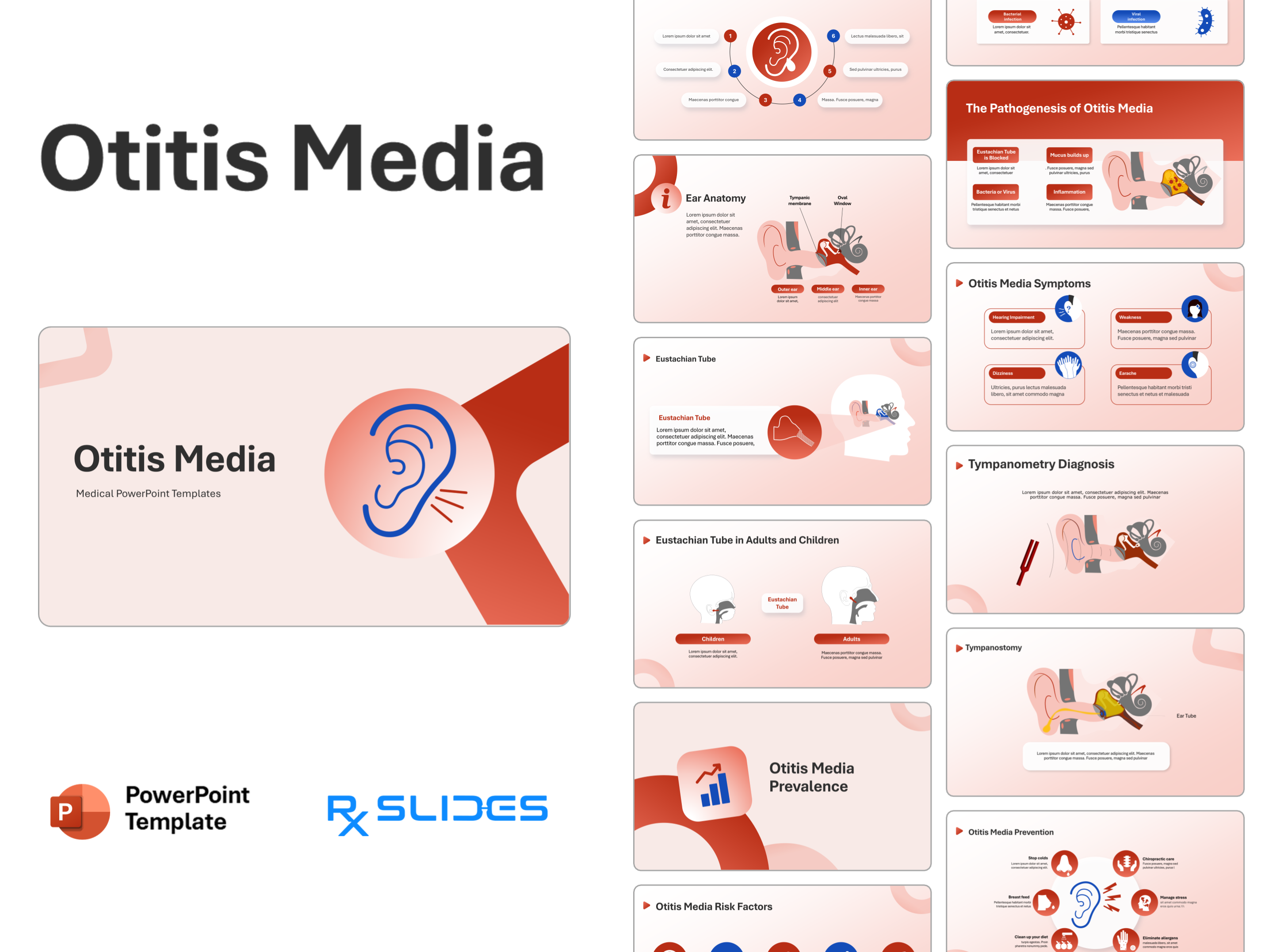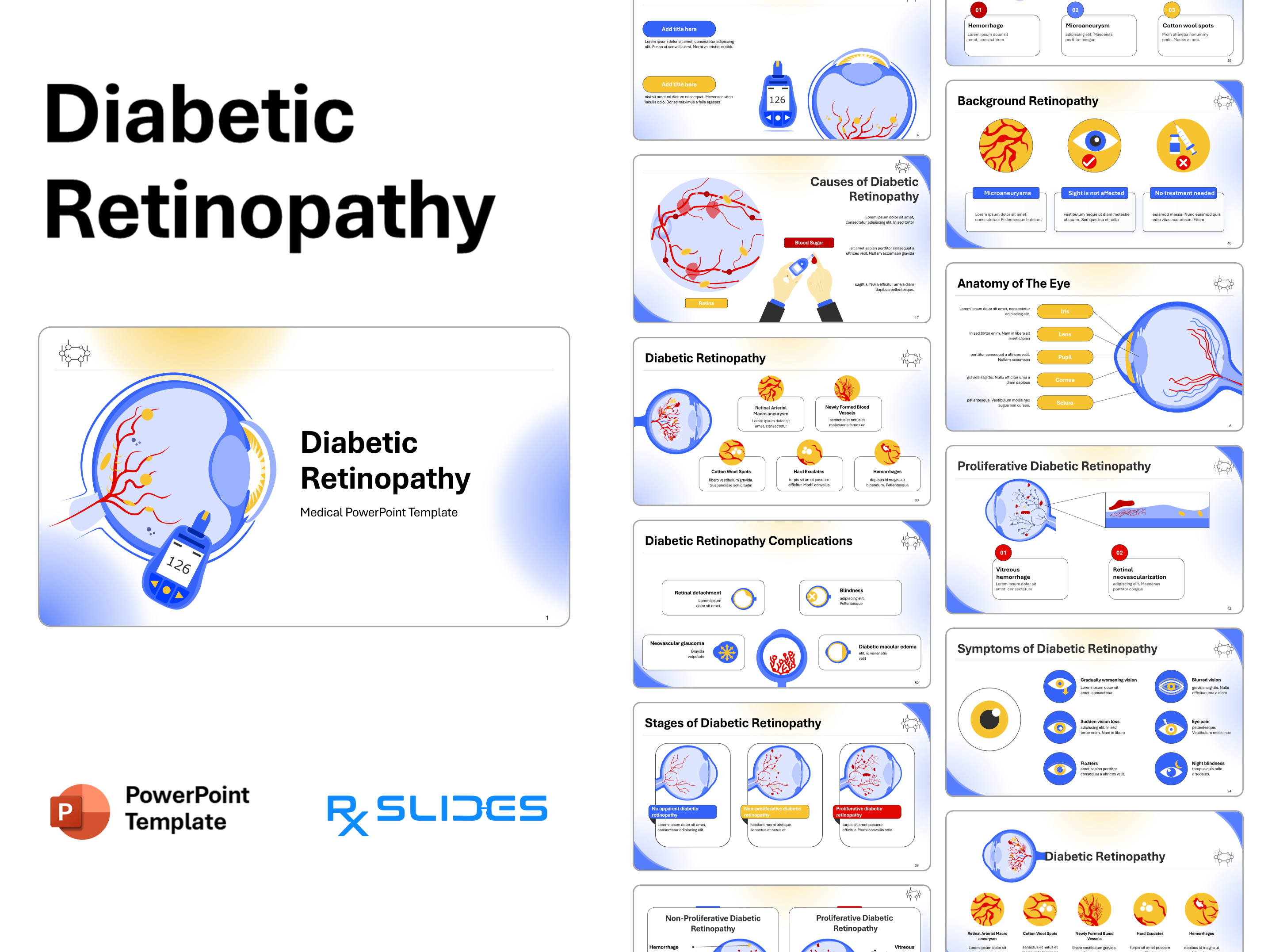Liver Cancer PowerPoint Template
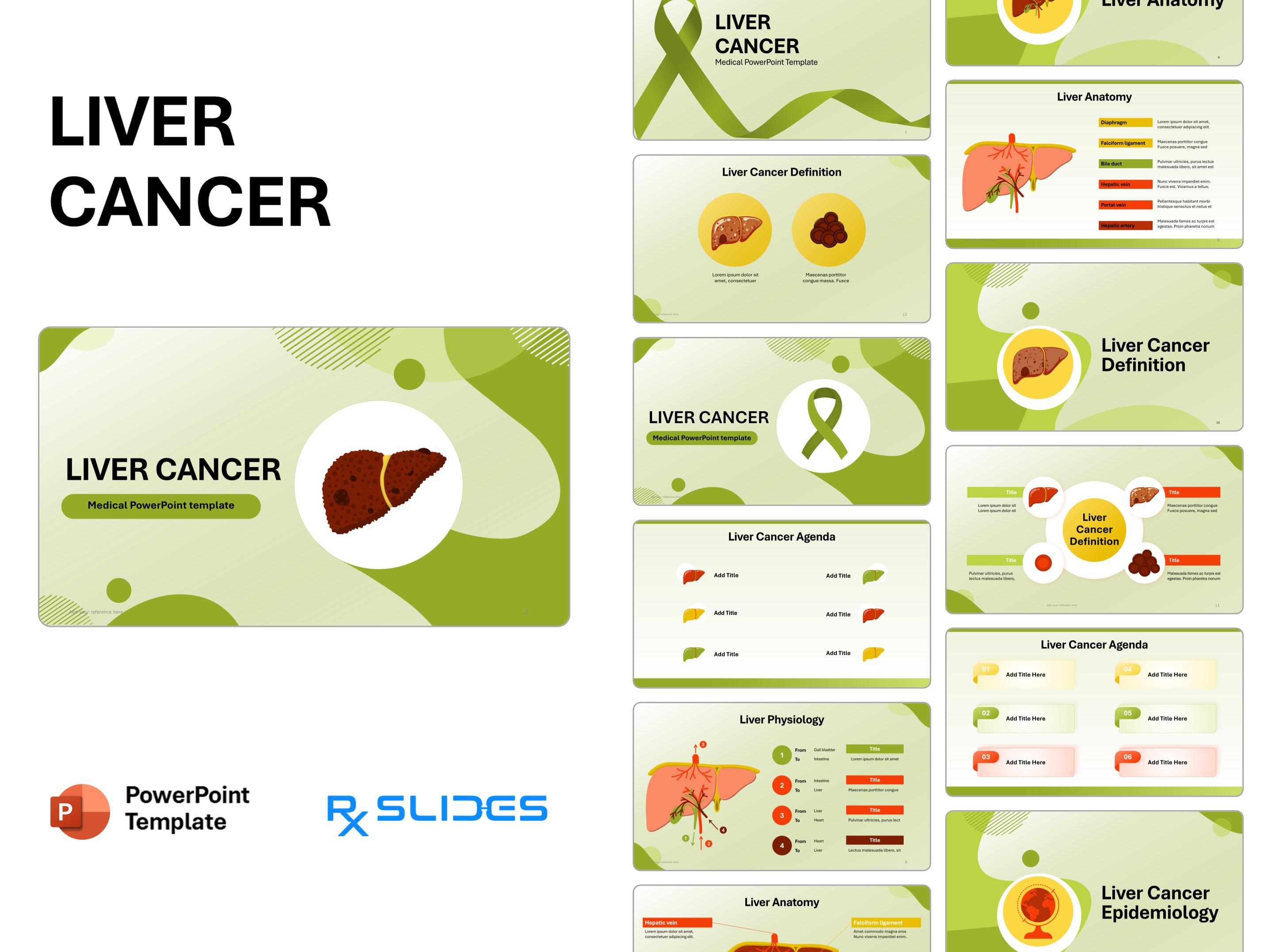
Liver Cancer PowerPoint Template
- This liver cancer PowerPoint template is a professional, fully editable medical presentation designed for oncologists, hepatologists, and medical educators.
- This Hepatic Cancer PPT Template has organized slides that explain the anatomy, causes, diagnosis, and treatment, blending accurate science with clear visuals.
- Ideal for academic lectures, research conferences, or clinical teaching.
Key Features
- Covers the full spectrum: liver anatomy, physiology, epidemiology, pathogenesis, staging, diagnosis, treatment, and follow-up.
- Professional visuals, including labeled diagrams, infographics, and data charts that enhance audience engagement.
- The layouts are both editable and adaptable.
- Works seamlessly with both PowerPoint and Google Slides.
Liver Cancer PowerPoint Presentation Template Content
Slide 1 - Title Slide
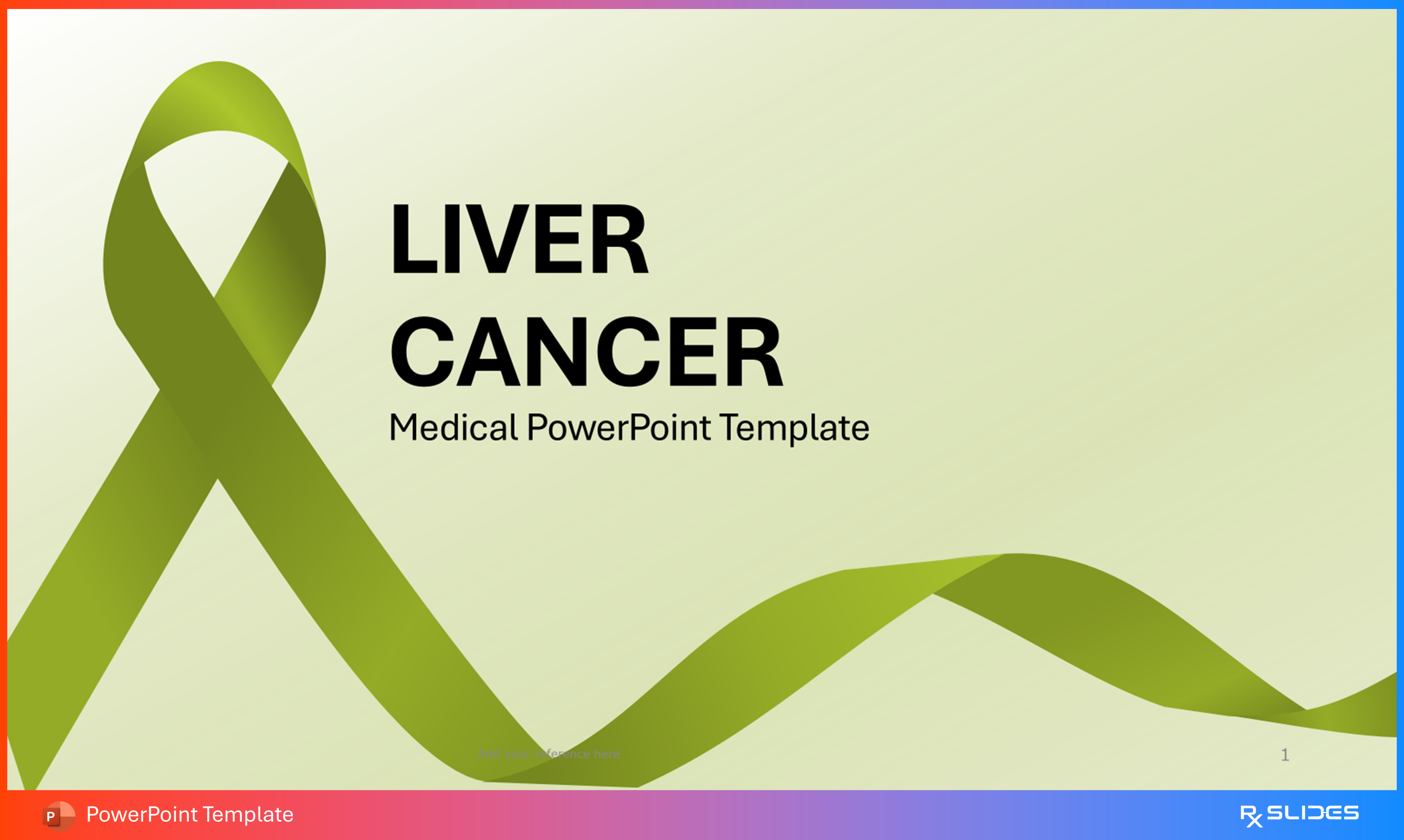
- Clean, medical-themed opening slide with space for presentation title, presenter name, institution, and references.
- Sets a professional tone for academic or conference sessions.
Slide 2 - First Presenter Layout
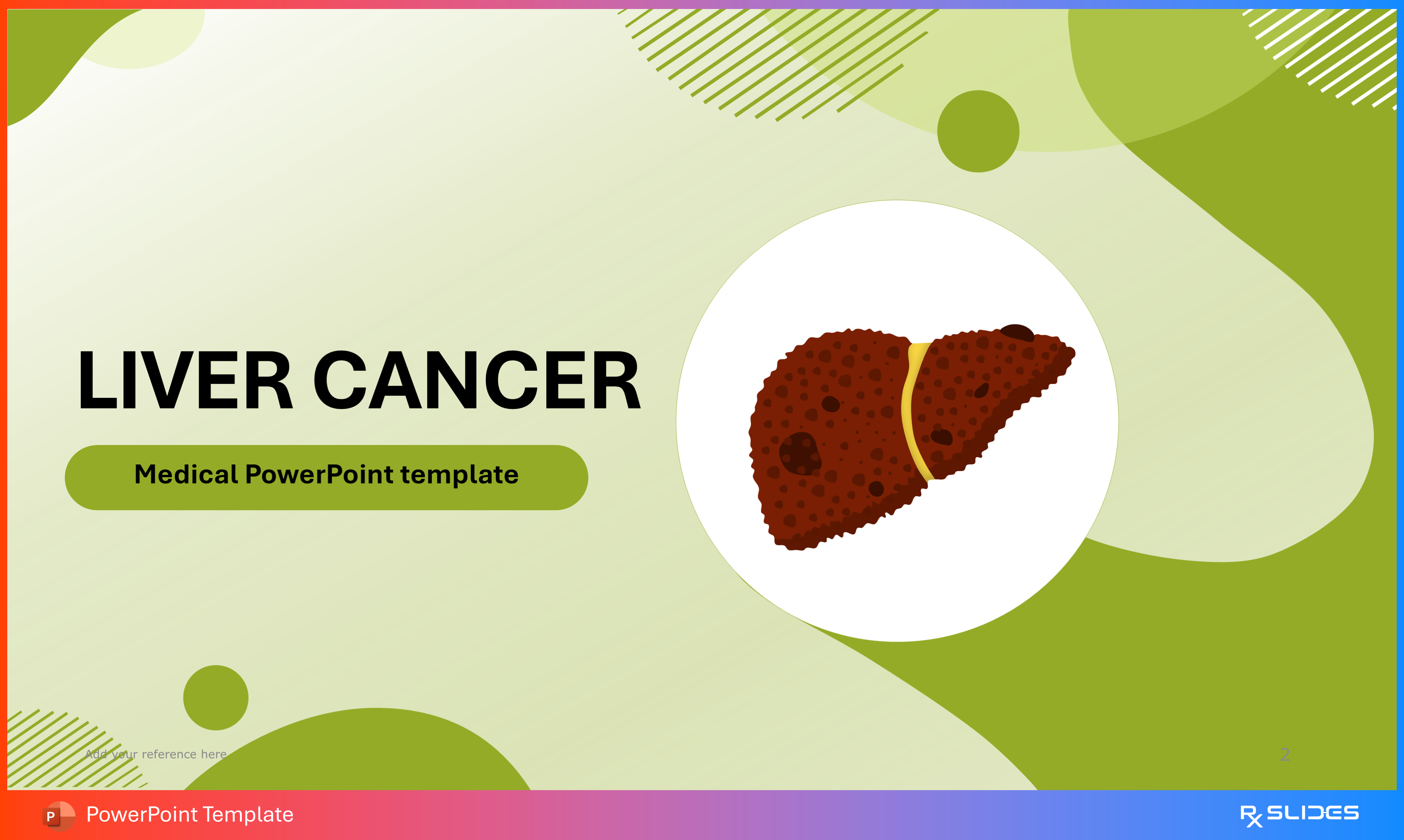
- Secondary title format allowing alternate logo placement or subtitle lines.
- Ideal for co-authors or departmental adaptations.
Slide 3 - Title Variation Animated Slide
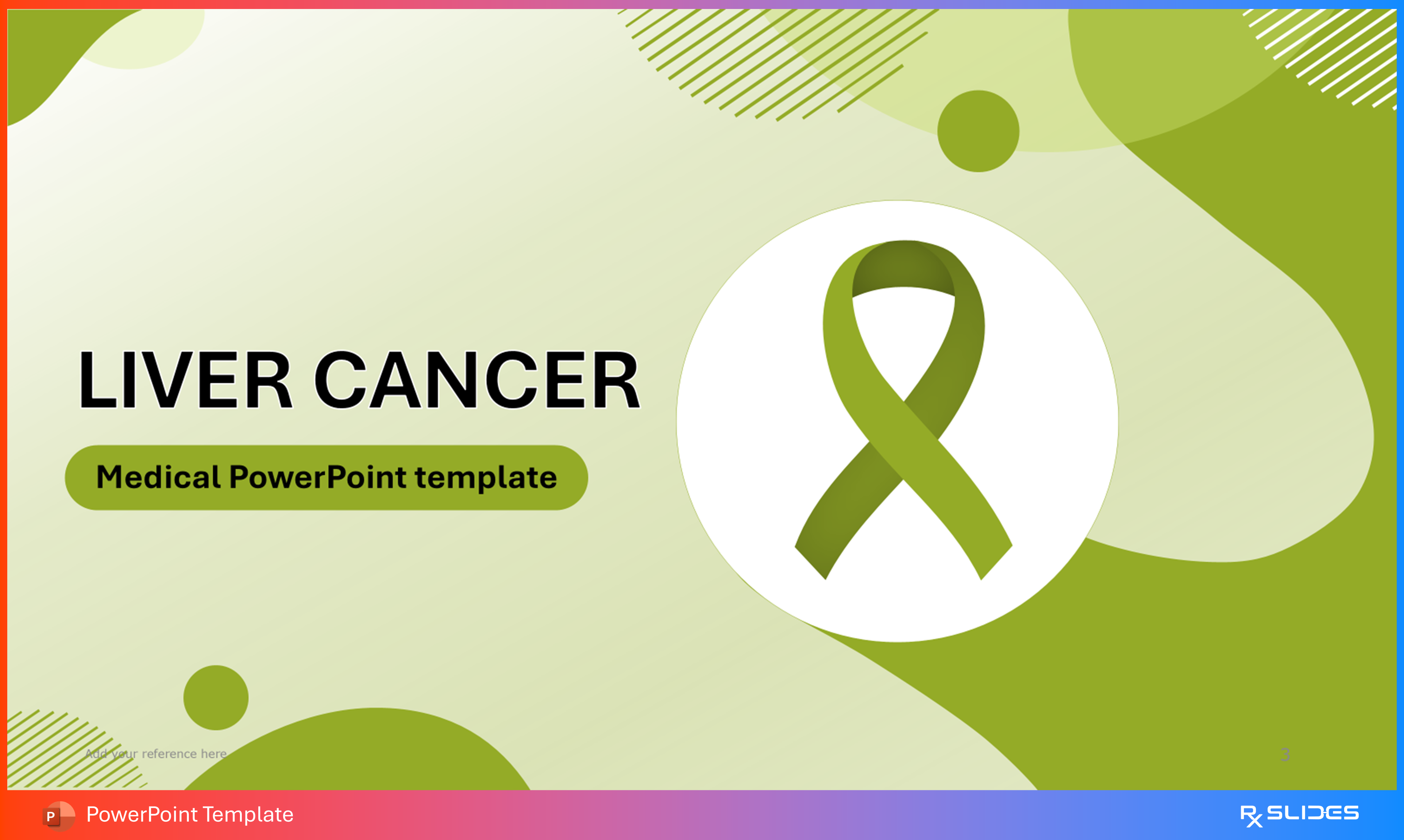
- Third cover option for research seminars or multi-session modules, maintaining consistent brand identity across lectures.
Slide 4 - Agenda
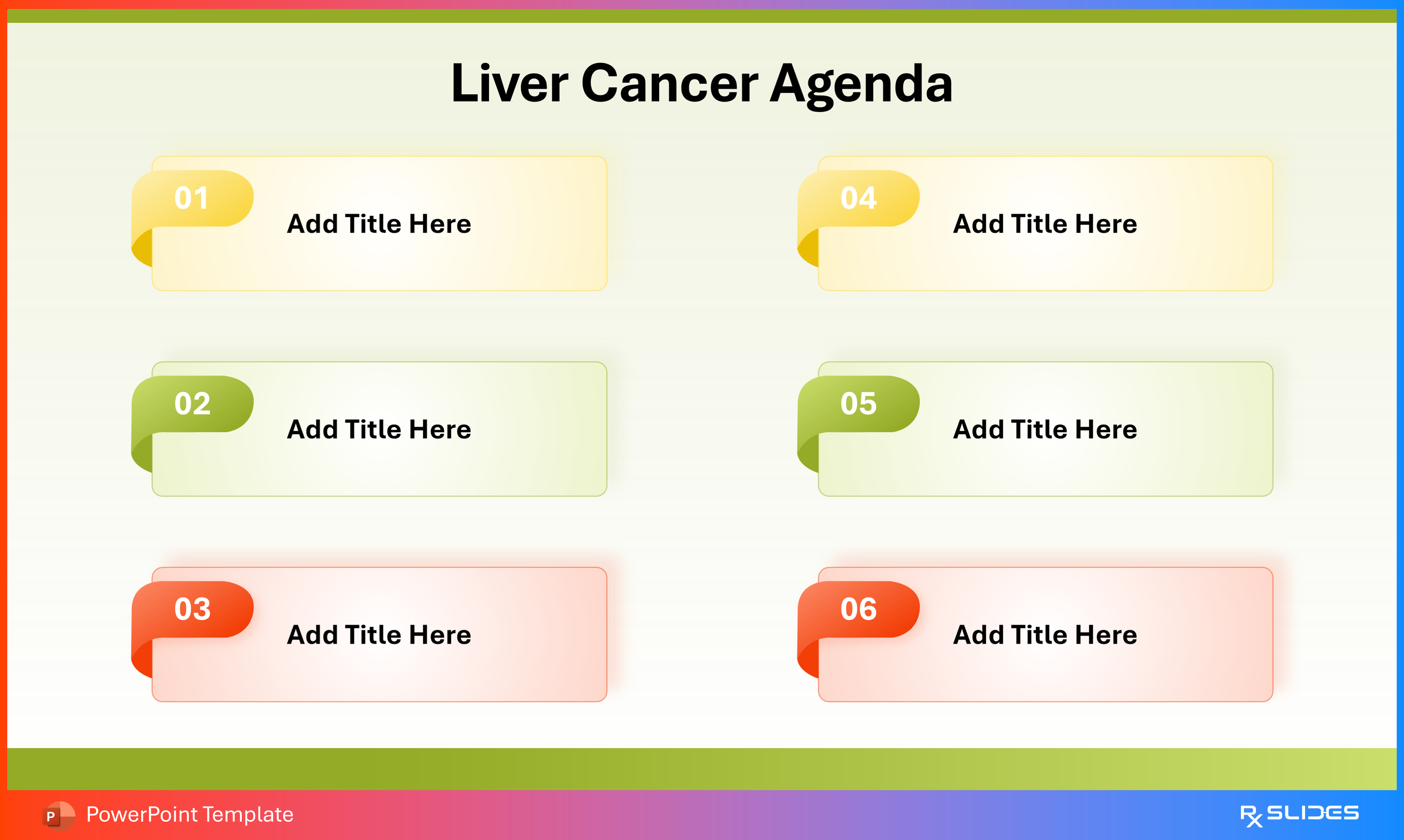
- Lists main presentation sections—Anatomy, Physiology, Definition, Epidemiology, Risk Factors, Pathogenesis, Diagnosis, Treatment, and Follow-up—to guide audience expectations.
Slide 5 - Agenda using liver as bullets
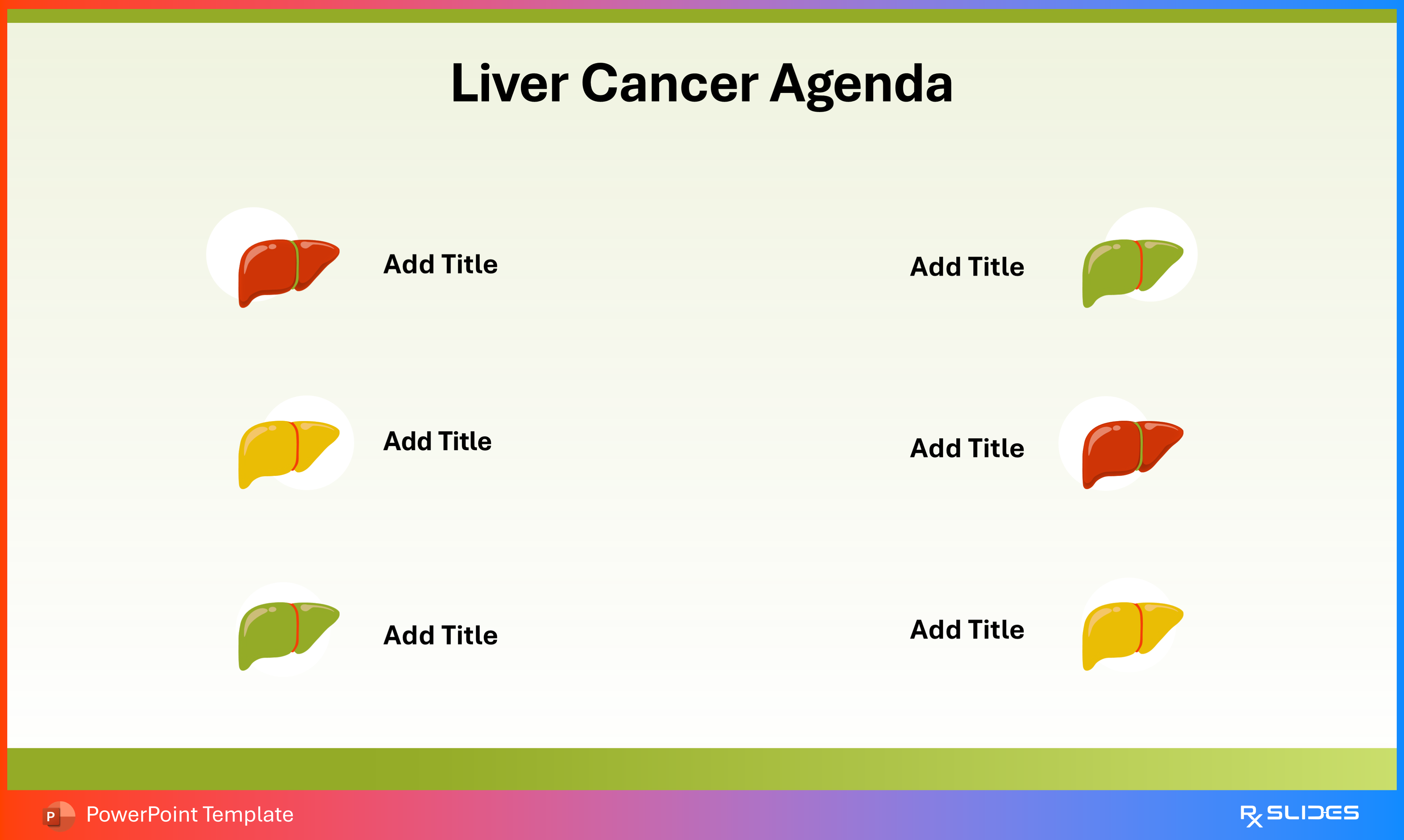
- Uses stylized liver vectors for bullet points, making this layout suitable for adaptation in other hepatic cancer PowerPoint presentations or any liver disease.
Slide 6 - Liver Anatomy Section Divider
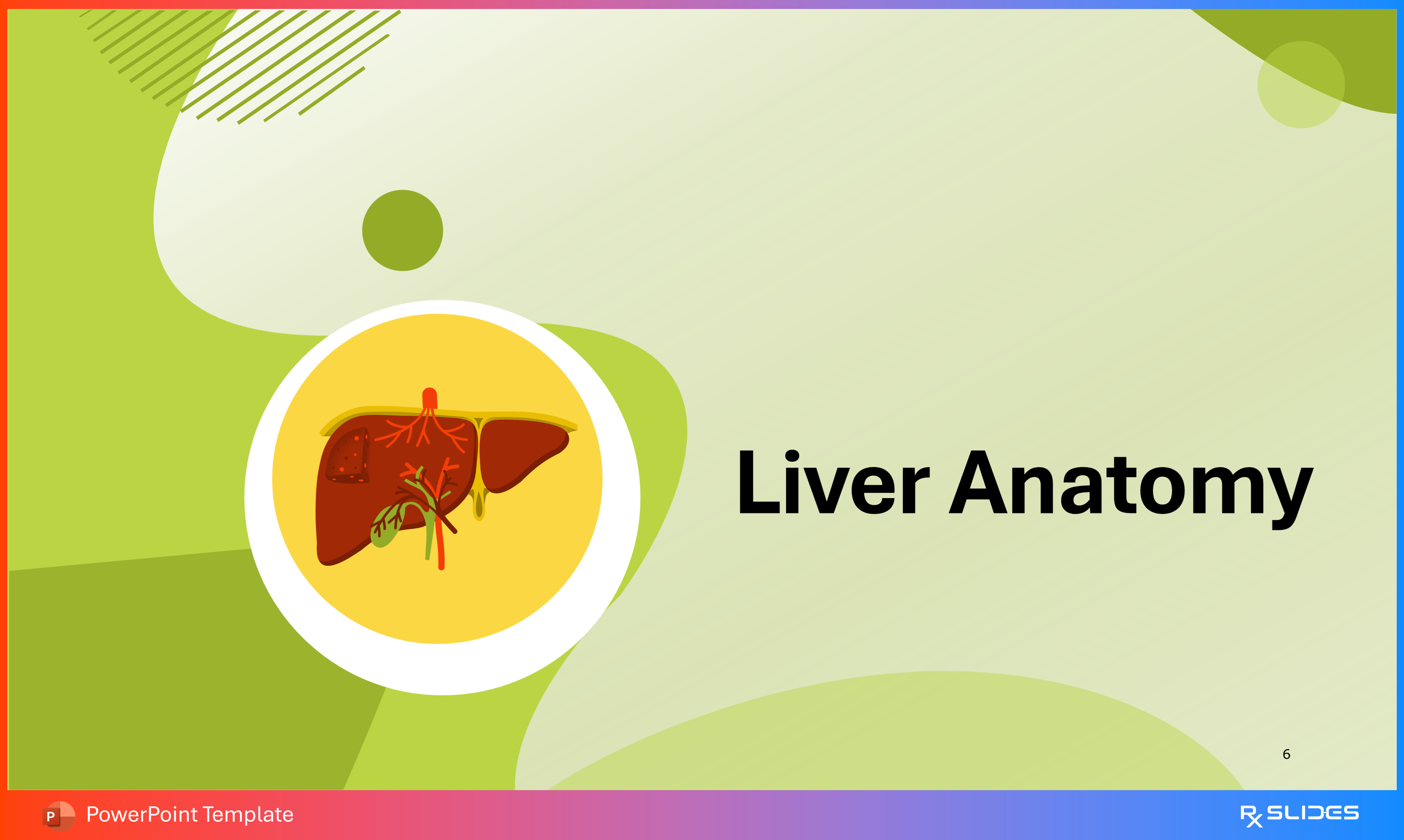
- Transition slide introducing the Anatomy segment with a clean background and strong title emphasis to mark the new section.
Slide 7 - Liver Anatomy (Animated Detailed Layout)
.PNG)
- Illustrated diagram labeling key hepatic structures: portal vein, hepatic artery, bile ducts, falciform ligament, diaphragm, and hepatic veins.
- Supports anatomical orientation before pathology discussion.
Slide 8 - Liver Anatomy (Labeled Diagram with Notes)
.PNG)
- Expanded visual with editable labels and text boxes for structural annotation—ideal for explaining vascular or biliary pathways.
Slide 9 - Liver Physiology
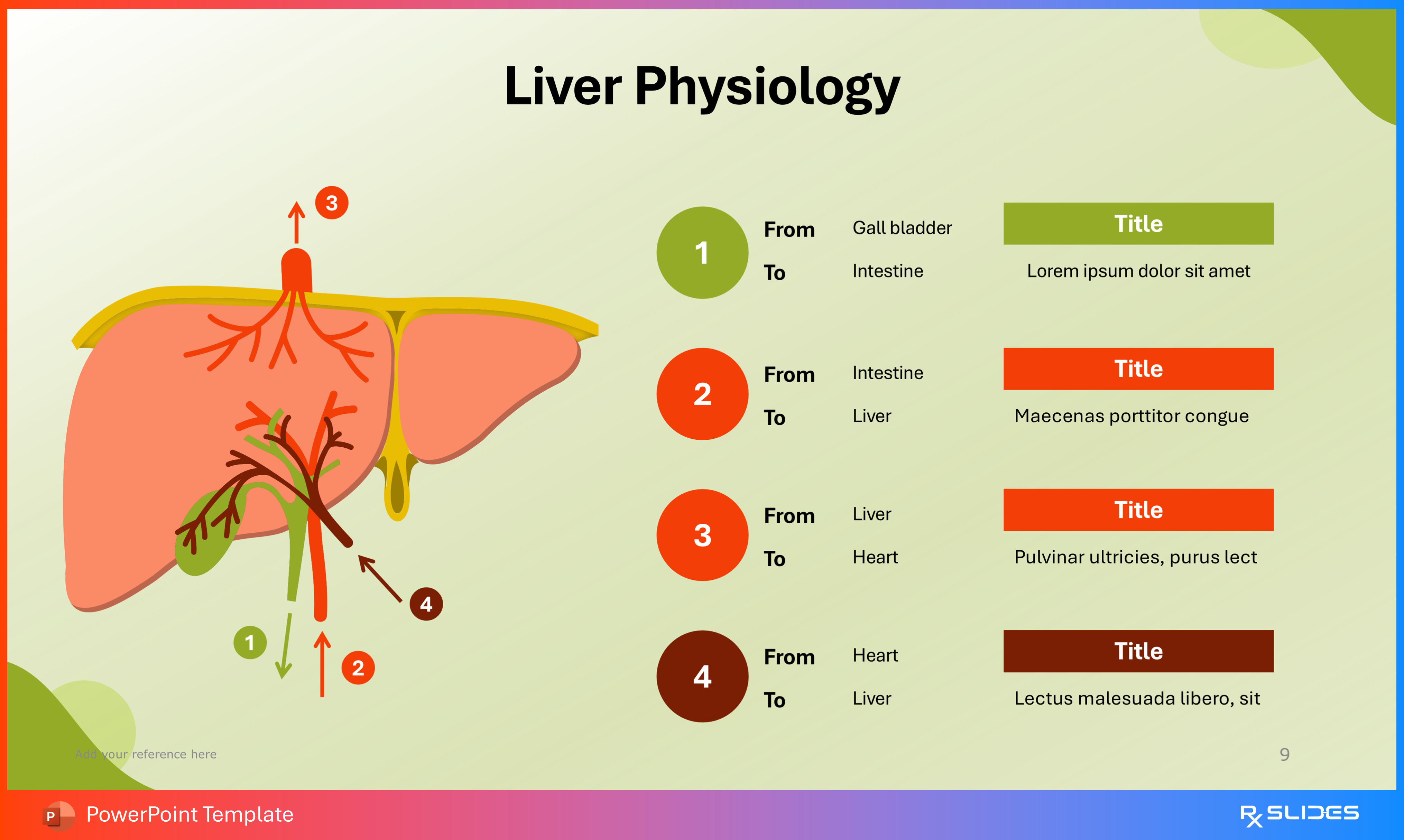
- Infographic layout summarizing liver functions: metabolism, detoxification, synthesis, and bile secretion.
- Editable fields and directional arrows enhance conceptual flow.
Slide 10 - Liver Cancer Definition – Section Divider
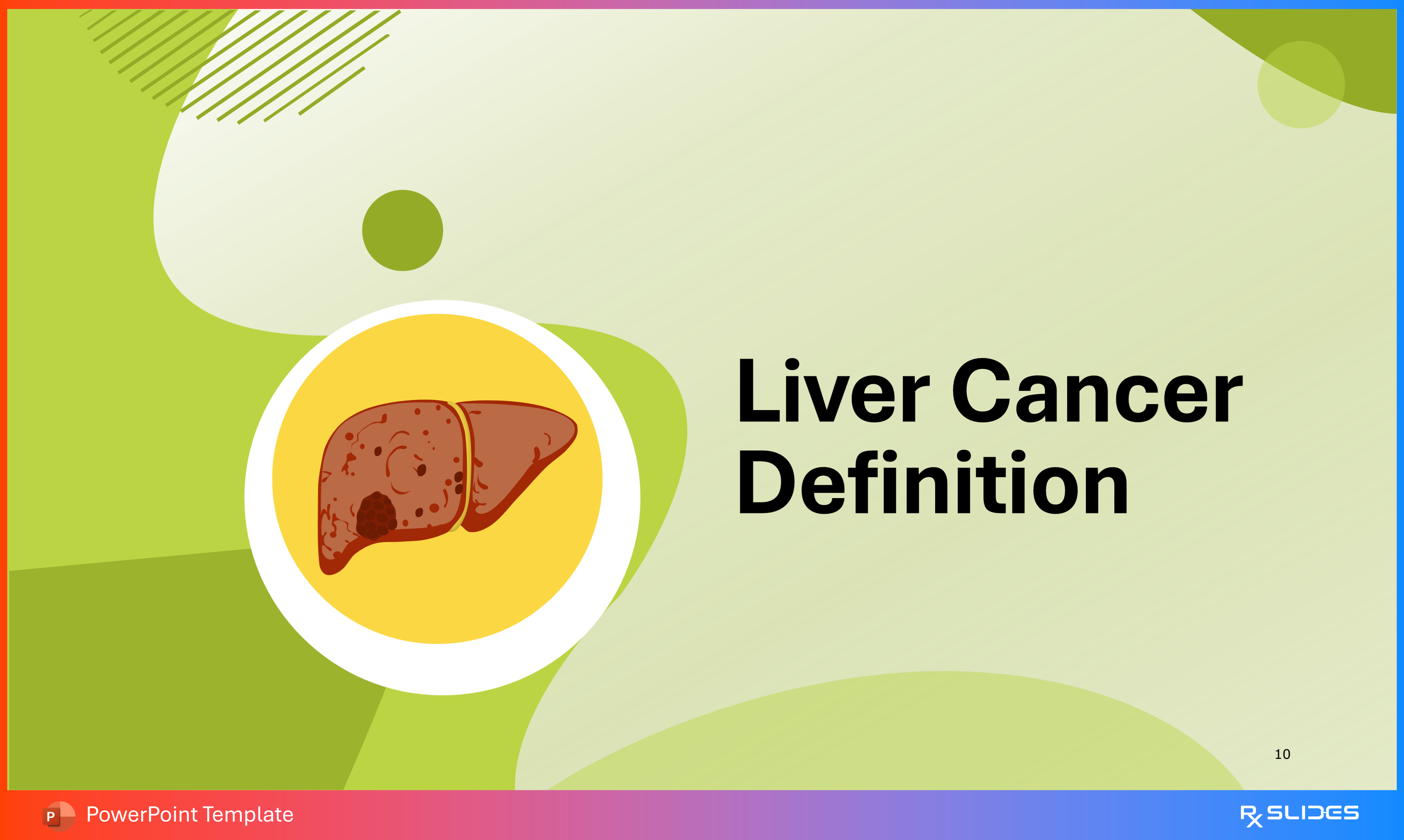
- Marks the start of the Definition and Disease Overview section, maintaining visual continuity and guiding the audience into clinical content.
Slide 11 - Liver Cancer Definition
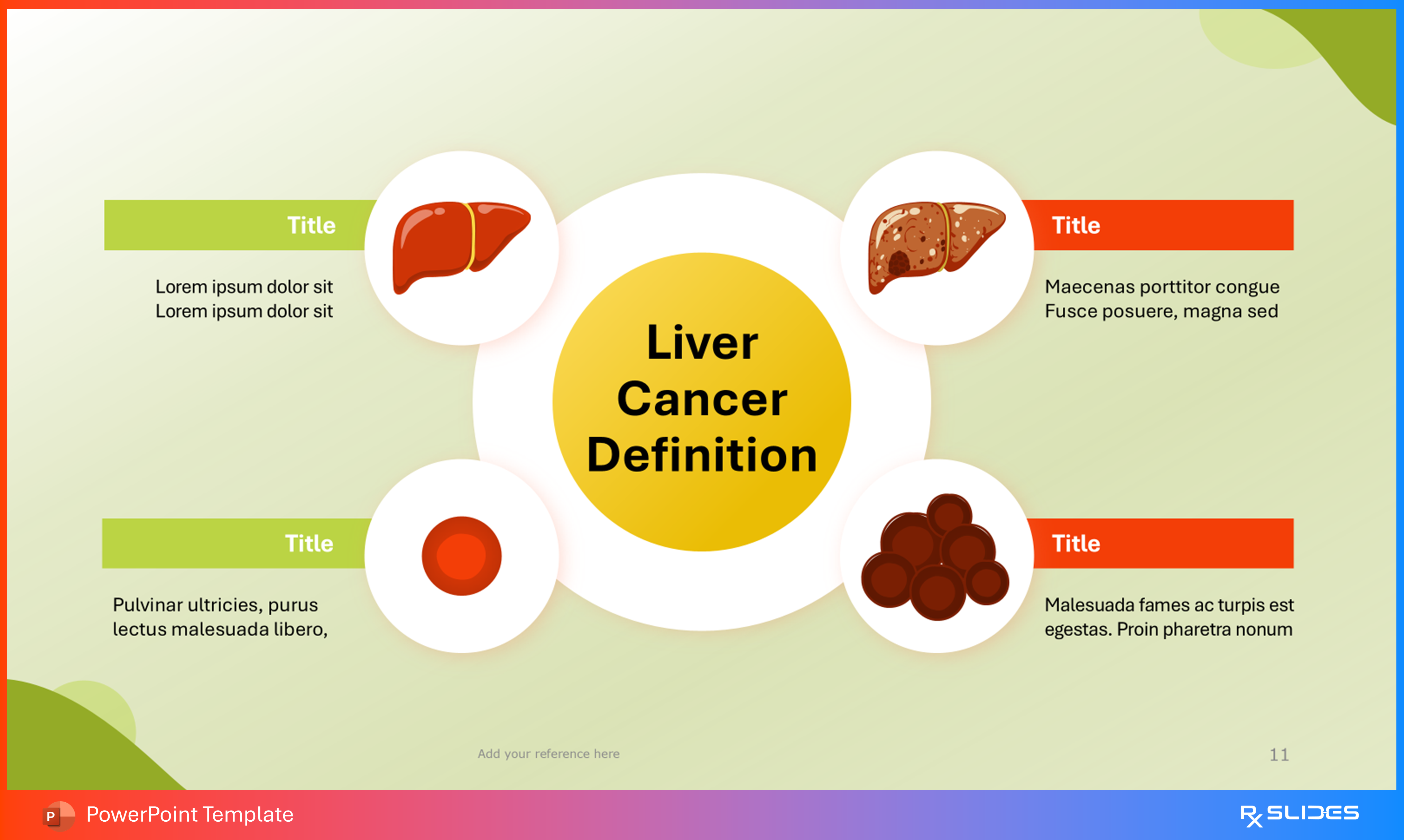
- Allows differentiation between primary hepatic malignancies and secondary metastatic lesions.
- Clean typography and structured text areas enable easy customization to WHO or institutional standards.
Slide 12 - Liver Cancer Definition (Animated View)
.PNG)
- Animated variant for progressive content reveal.
- Enhances engagement during lectures explaining disease classification or histologic criteria.
Slide 13 - Liver Cancer Epidemiology (Section Divider)
.PNG)
- A visual divider introducing the Epidemiology section, preparing the audience for incidence, prevalence, and survival data.
Slide 14 - Liver Cancer Epidemiology & Survival
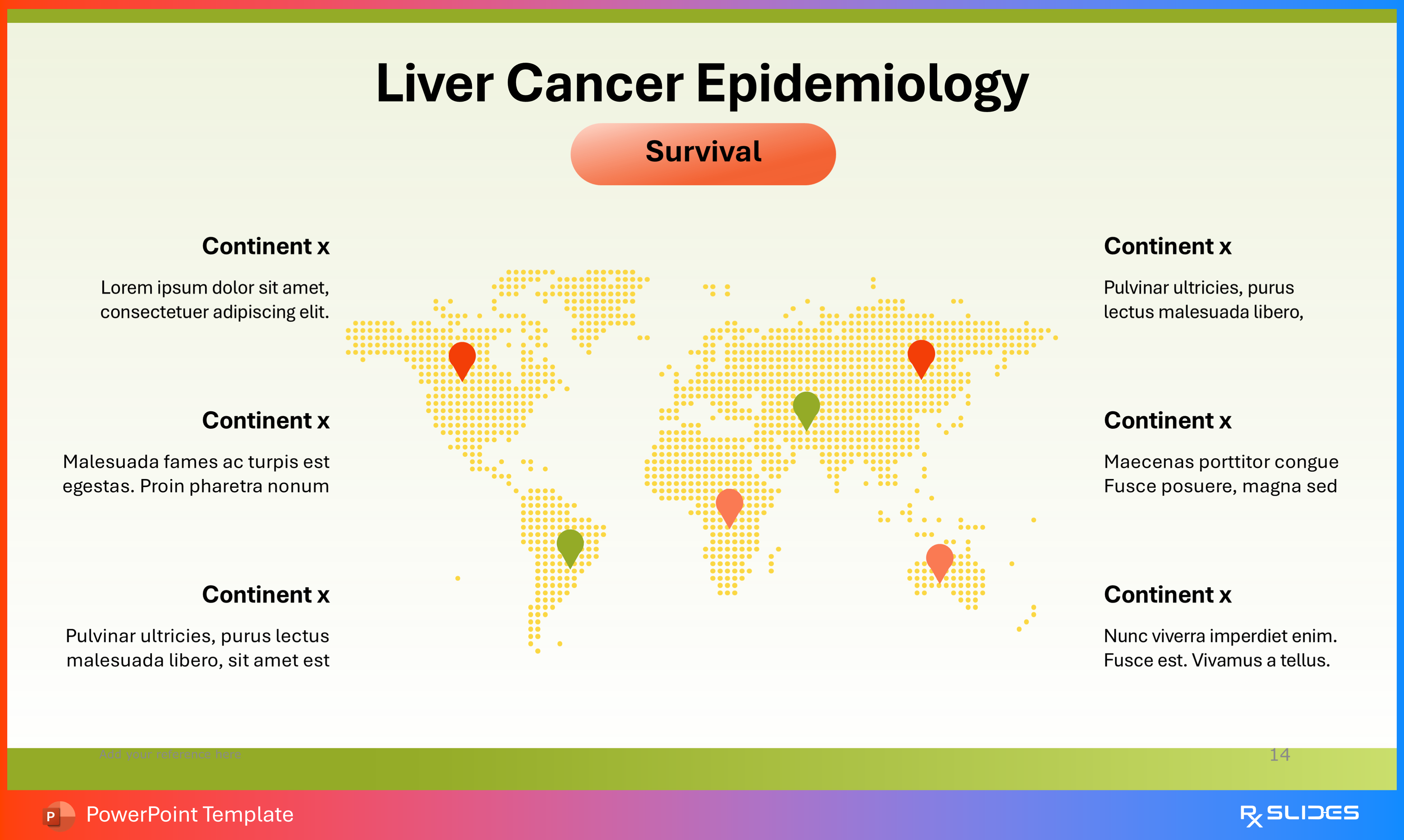
- Data-driven slide summarizing global and regional incidence, prevalence, and survival rates.
- Includes editable maps for easy customization.
Slide 15 - Liver Cancer Risk Factors (Section Divider)
.PNG)
- Streamlined transitional slide introducing the Risk Factors Part from epidemiologic data to general-level determinants.
Slide 16 - Liver Cancer Risk Factors
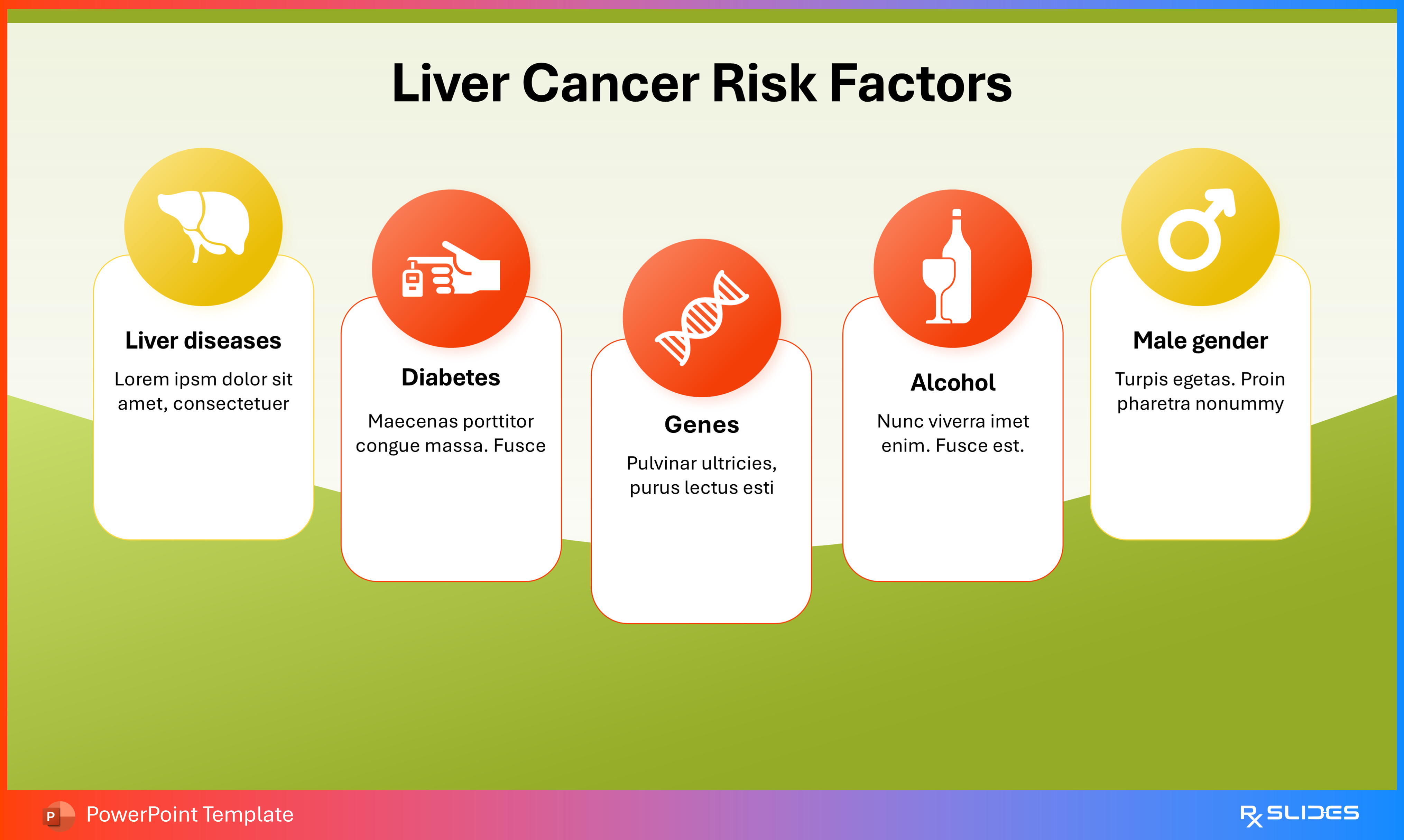
- Introduces the main risk categories contributing to liver cancer, designed for concise overviews in clinical or academic settings.
Slide 17 - Risk Factors of Liver Cancer
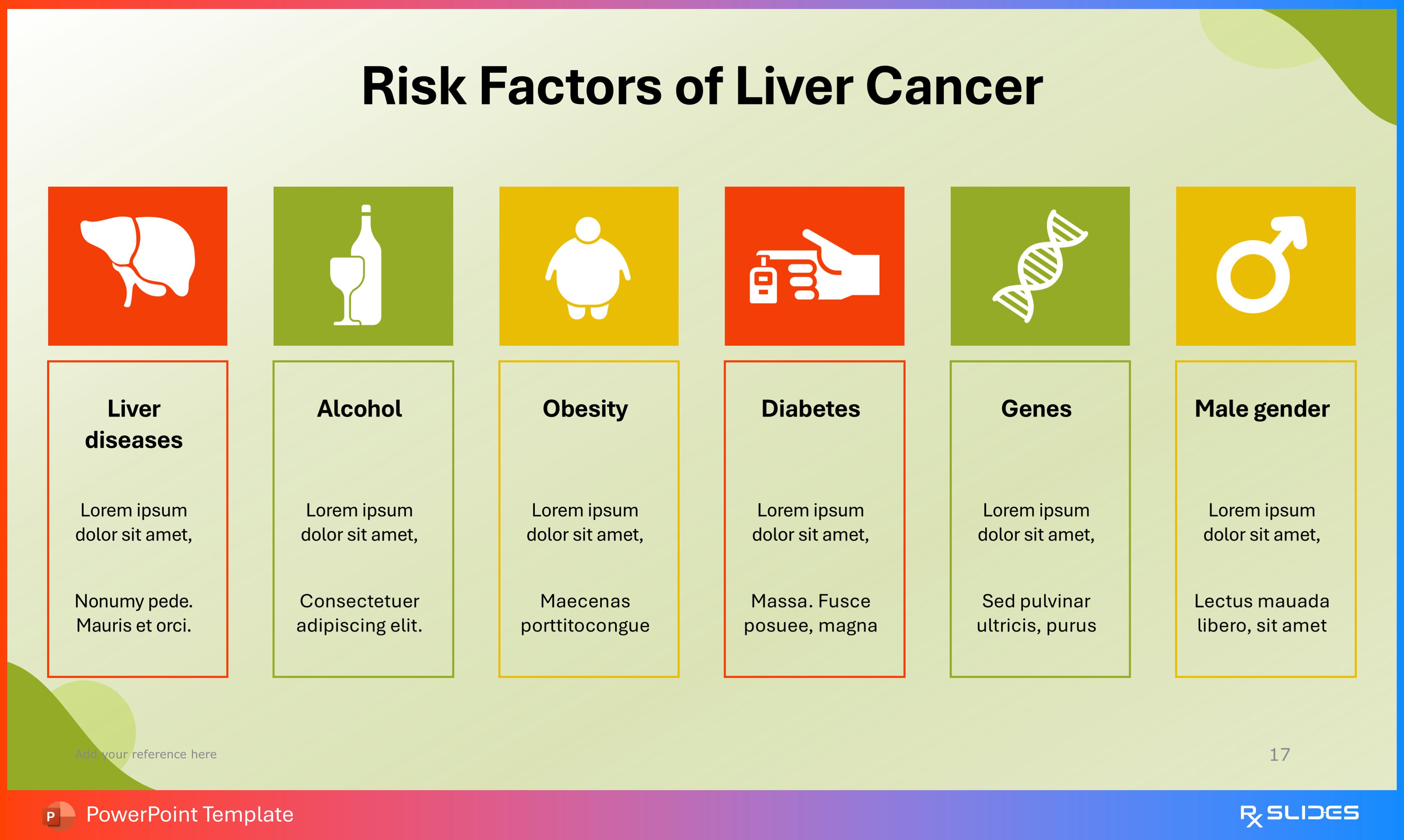
- Details specific etiologic contributors such as liver diseases, obesity, alcohol use, genetic predisposition, and gender.
- The clear layout supports quick visual recognition of modifiable vs. non-modifiable risks.
Slide 18 - Liver Cancer Risk Factors (Alternate Layout)
.PNG)
- Infographic version for hepatic cancer, which you can use in any liver disease presentation.
Slide 19 - Risk Factors of Liver Cancer (Alternate Design)
.PNG)
- Flexible summary layout for consolidating regional or demographic data before moving to causative mechanisms.
- Includes editable placeholders for institutional notes.
Slide 20 - Liver Cancer Causes (Section Divider)
.PNG)
- A professional divider introduces the Causes and Etiology segment, marking the transition from population-level risks to mechanistic insights.
Slide 21 - Liver Cancer Causes
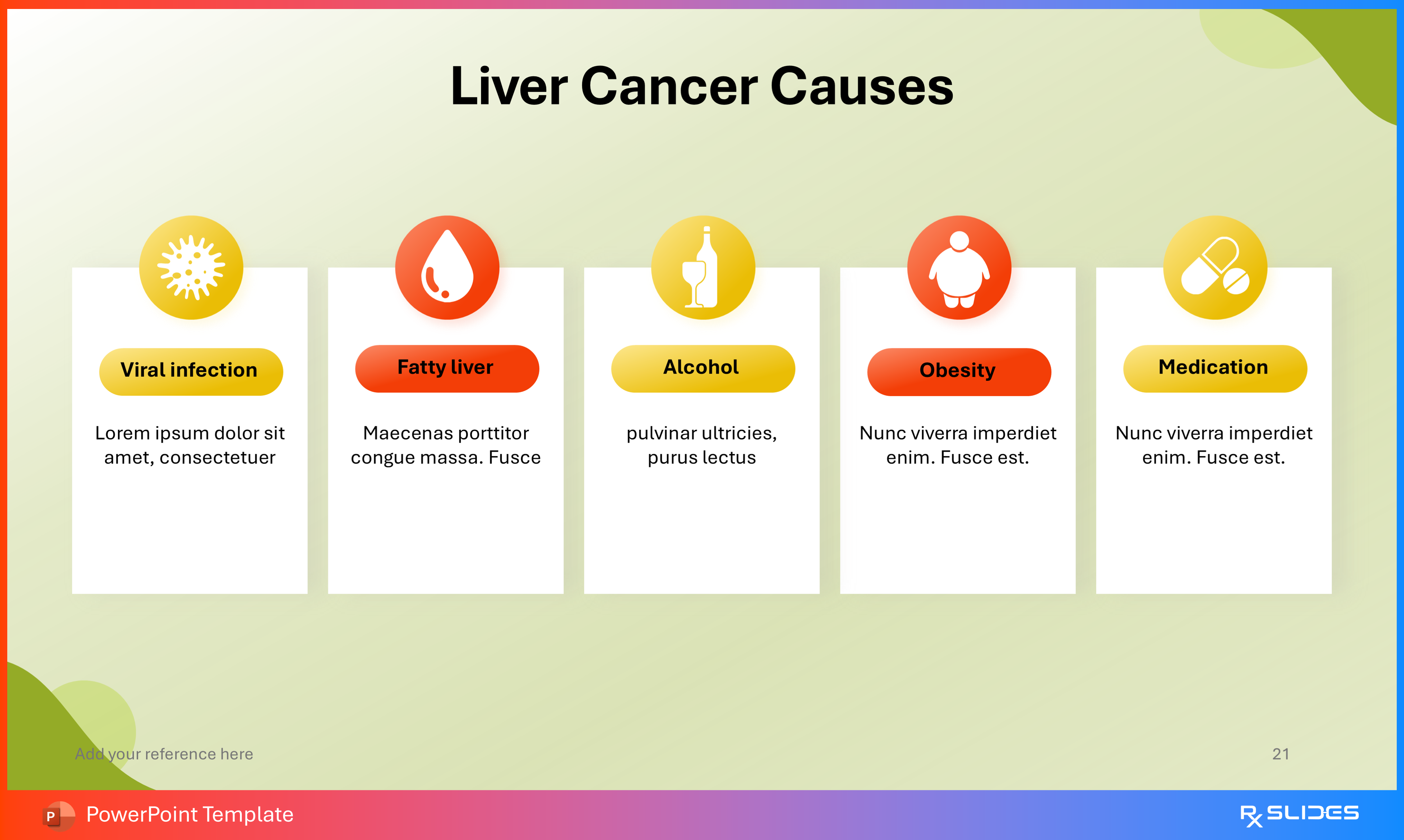
- Infographic summarizing principal causes such as viral infections, fatty liver, alcohol, obesity, and medications.
- Fully editable and visually balanced.
Slide 22 – Liver Cancer Pathogenesis (Section Divider)
.PNG)
- Clean divider marking the transition to the Pathogenesis segment.
- Features a bold, stylized DNA helix icon set against a modern gradient background.
Slide 23 - Liver Cancer Pathogenesis (Cellular/Histologic View)
.PNG)
- Animated visual illustrating cellular transformation and neoplastic migration into the bloodstream.
- Easily insert your explanatory text at each stage.
Slide 24 - Liver Cancer Pathogenesis (Annotated Flow/Timeline)
.PNG)
- Timeline layout highlighting diseased tissue progression across the liver.
- Visual cues and color contrast support storytelling animations on tumor development.
Slide 25 - Liver Cancer Types
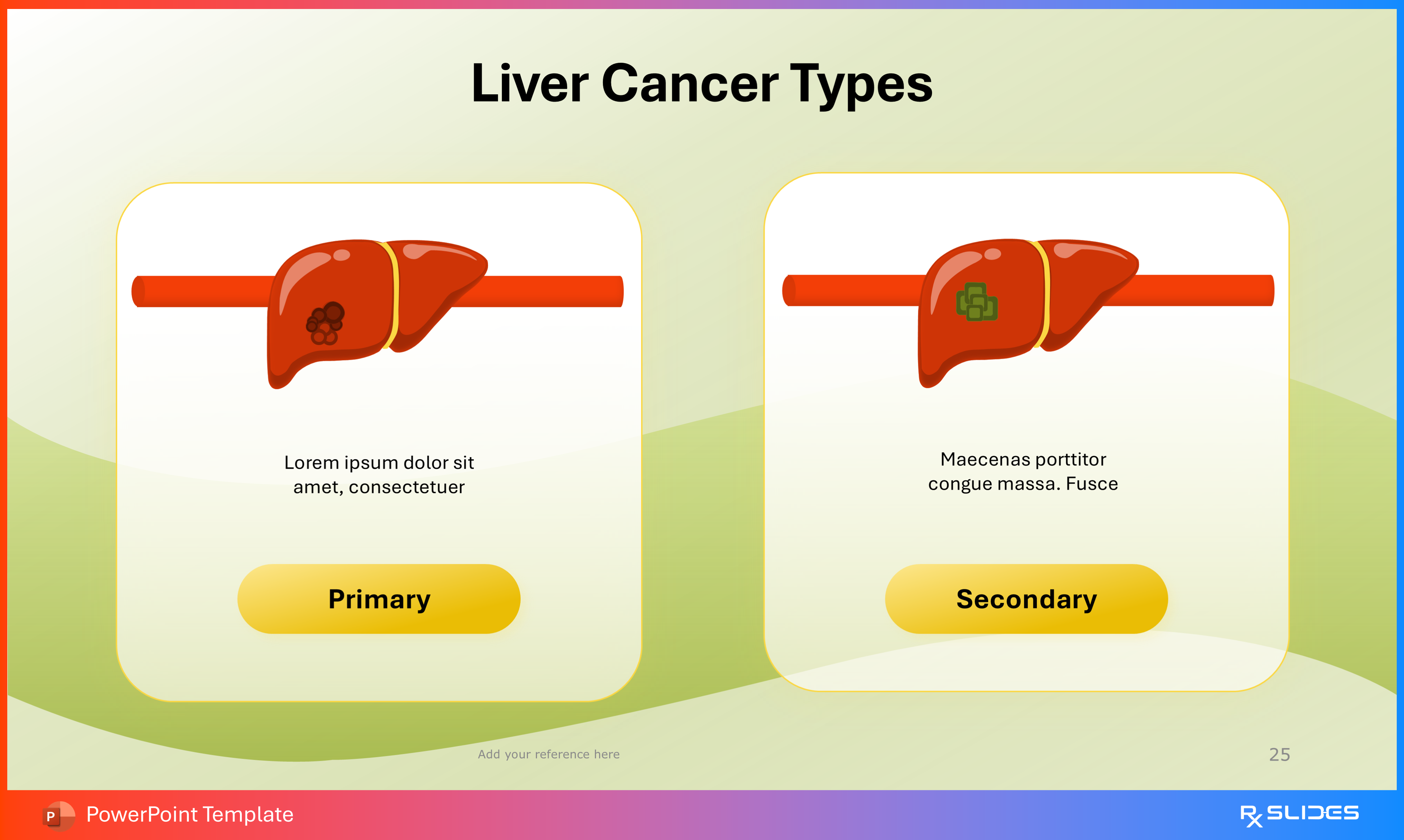
- Compares primary and secondary liver cancer using symmetrical illustrations.
- The left visual shows primary malignancy arising in hepatic tissue; the right depicts secondary metastasis.
- Ideal for clinical or educational differentiation.
- An engaging addition to any oncology or hepatic cancer PowerPoint presentation.
Slide 26 - Liver Cancer Stages (Section Divider)
.PNG)
- Visually striking divider featuring stylized liver imagery, signaling the start of the Staging section with a consistent medical aesthetic.
Slide 27 - Liver Cancer Stages (Overview)
.PNG)
- Outlines the main staging systems used in clinical oncology, referencing common categories like hepatic fibrosis and cirrhosis.
Slide 28 - Liver Cancer Stages (Extended View)
.PNG)
- Graphical depiction of disease progression—fibrosis, cirrhosis, and hepatocellular carcinoma.
- Perfect for animated liver cancer PPT teaching modules.
Slide 29 - Liver Cancer Stages (Comparative Slide)
.PNG)
- Summarizes all stages in one cohesive view.
- Displays normal versus affected liver anatomy with editable notes linking stage to function or prognosis.
Slide 30 – Liver Cancer Symptoms (Section Divider)
.PNG)
- Transitional slide introducing the Clinical Manifestations section, signaling a shift toward patient presentation and symptom discussion.
Slide 31 - Liver Cancer Symptoms (Overview)
.PNG)
- Highlights main clinical symptoms such as abdominal pain, weight loss, chills, and fever.
- Female animated illustrations enhance visual appeal and relevance.
Slide 32 - Liver Cancer Symptoms (Extended)
.PNG)
- Continuation slide for advanced symptoms including fatigue, ascites, and jaundice.
- Select and adapt elements for customized teaching cases.
Slide 33 - Liver Cancer Diagnosis (Section Divider)
.PNG)
- A professional divider introducing the diagnostic module and serving as a visual reset between symptoms and investigations.
Slide 34 - Liver Cancer Diagnosis (Overview)
.PNG)
- Outlines diagnostic workflow like ultrasound, CT/MRI imaging, and laboratory confirmation.
- Essential for both clinical presentations and academic liver cancer PowerPoint lectures.
Slide 35 - Diagnosis of Liver Cancer (Detailed Layout)
.PNG)
- Alternate format for presenting detailed diagnostic criteria, results, or institutional protocols.
- Editable to match local guidelines.
Slide 36 - Liver Cancer Treatment (Section Divider)
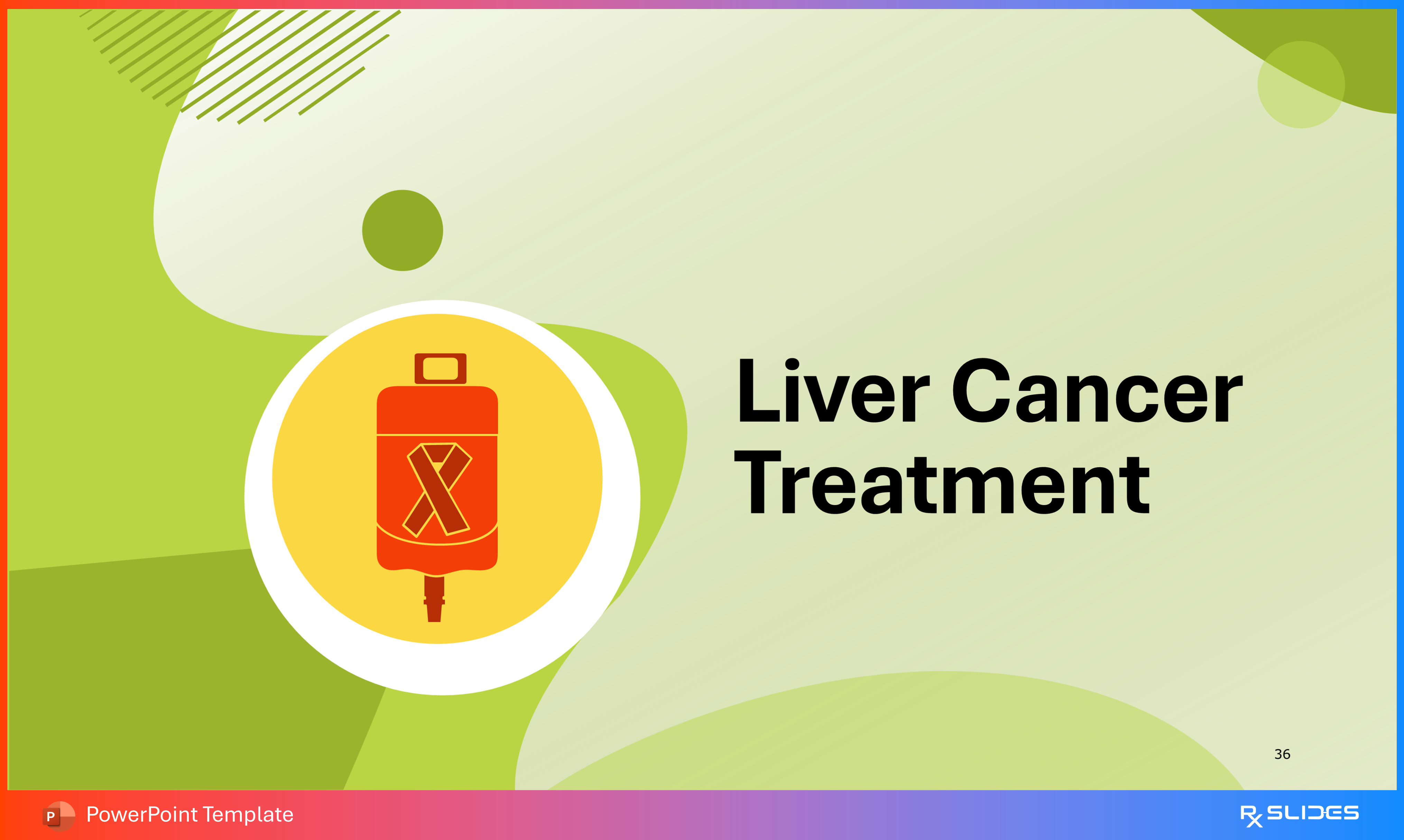
- Marks the start of the Treatment and Management section, transitioning smoothly from diagnostics to therapeutic approaches.
Slide 37 - Liver Cancer Treatment Overview
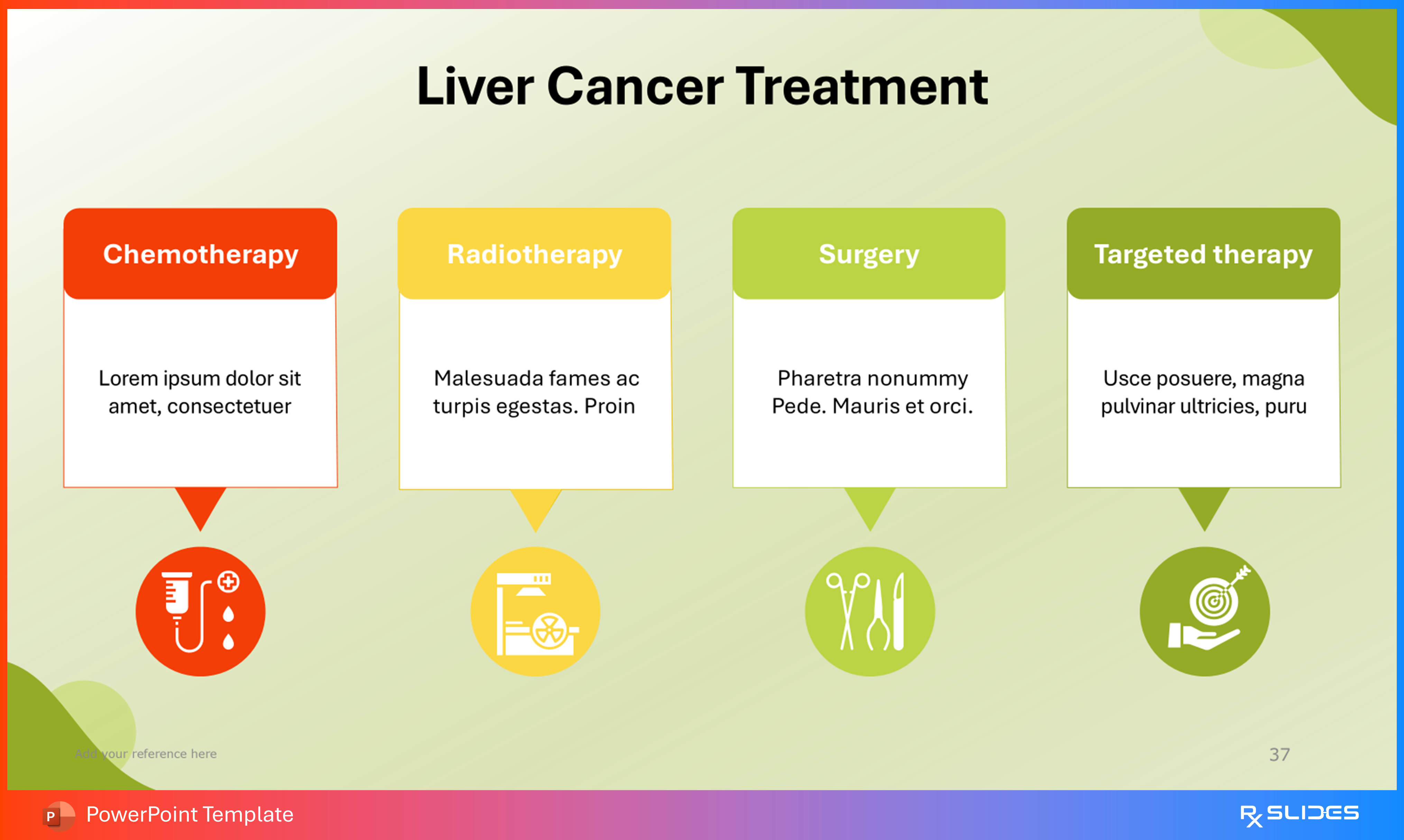
- Summarizes major treatment modalities using a structured two-tiered layout—title above, key evidence-based points below.
- Perfect for comparing strategies concisely.
Slide 38 - Liver Cancer Management Layout
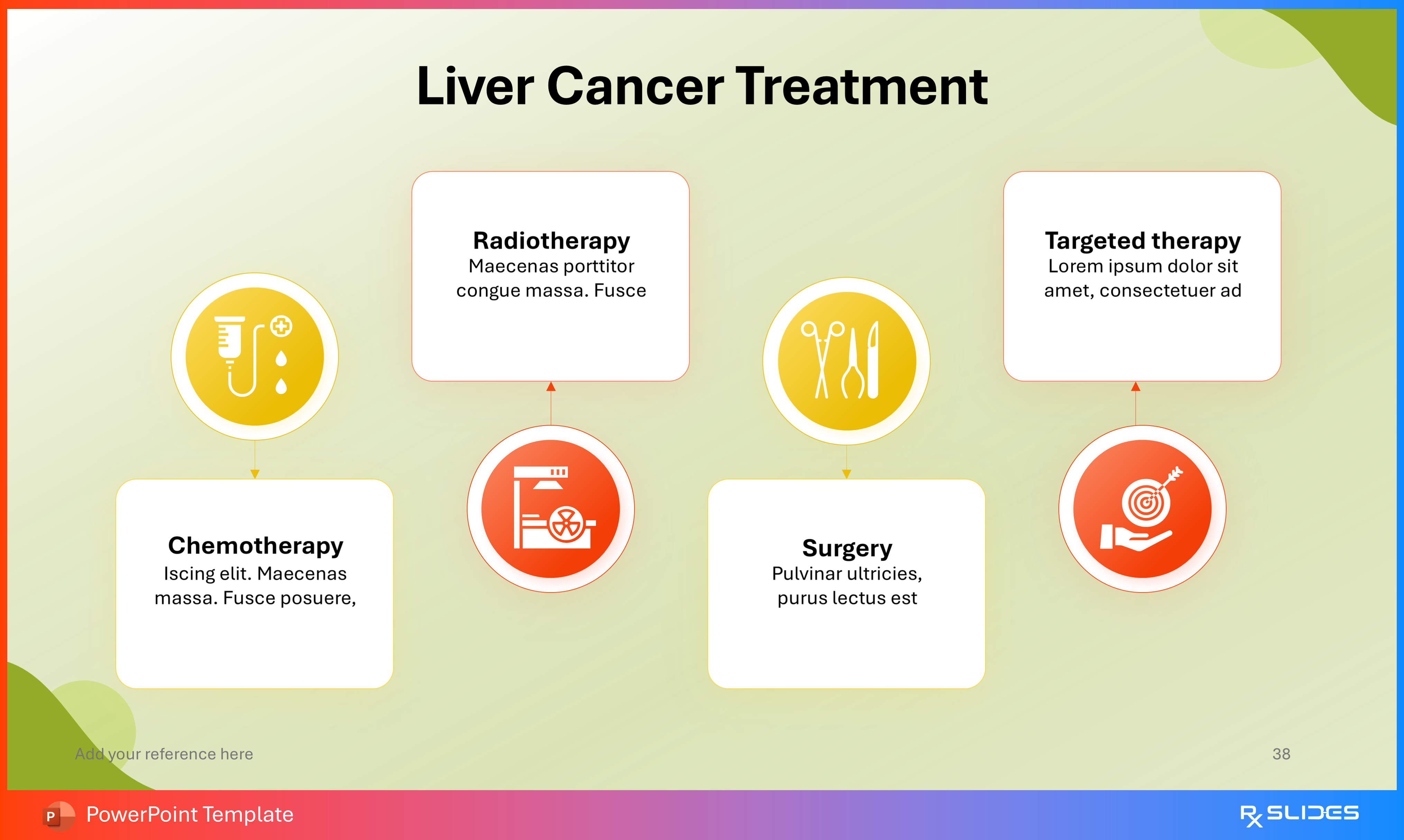
- This liver cancer PowerPoint slide is ideal for illustrating treatment algorithms.
- Editable tables including surgery, chemotherapy, radiotherapy, and targeted therapy.
Slide 39 - Liver Cancer Follow-Up
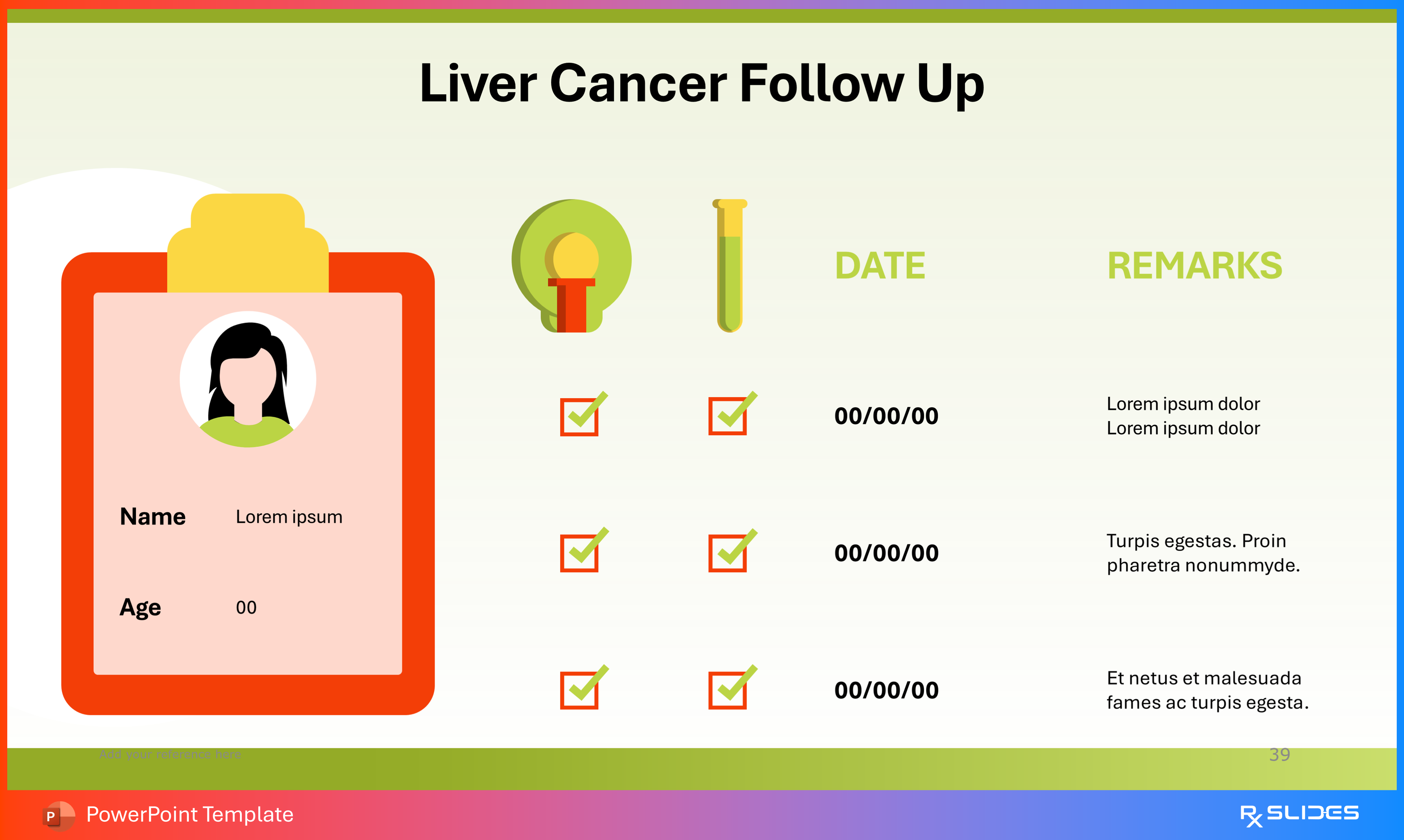
- Structured follow-up table with editable fields for date, clinical status, and remarks.
- Supports documentation of surveillance or recurrence monitoring.
Slide 40 - Liver Cancer Summary/Recap
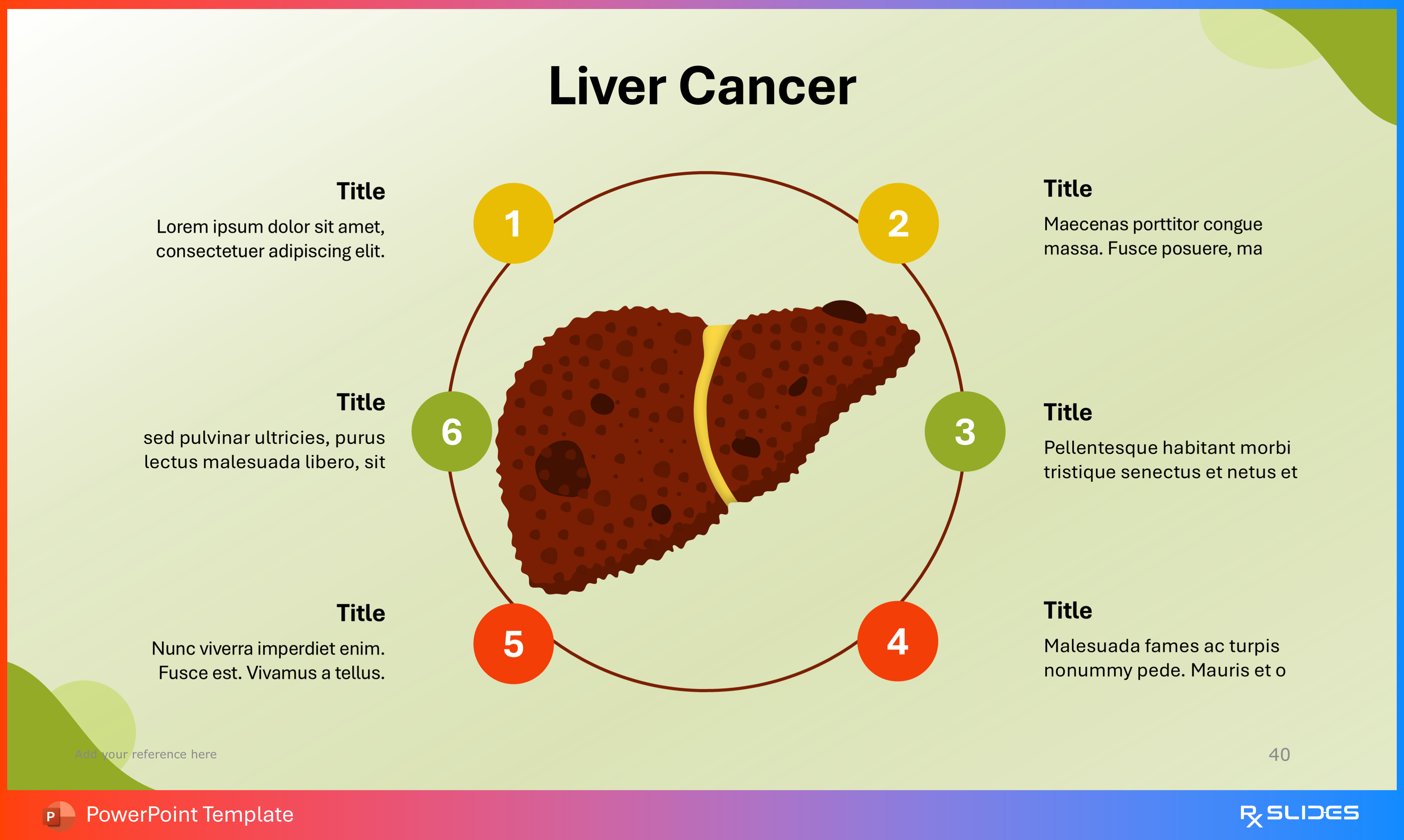
- Visual summary slide for learning objectives or key takeaways.
- Numbered placeholders simplify review and reinforce retention.
Slide 41 - Thank You / Closing Slide
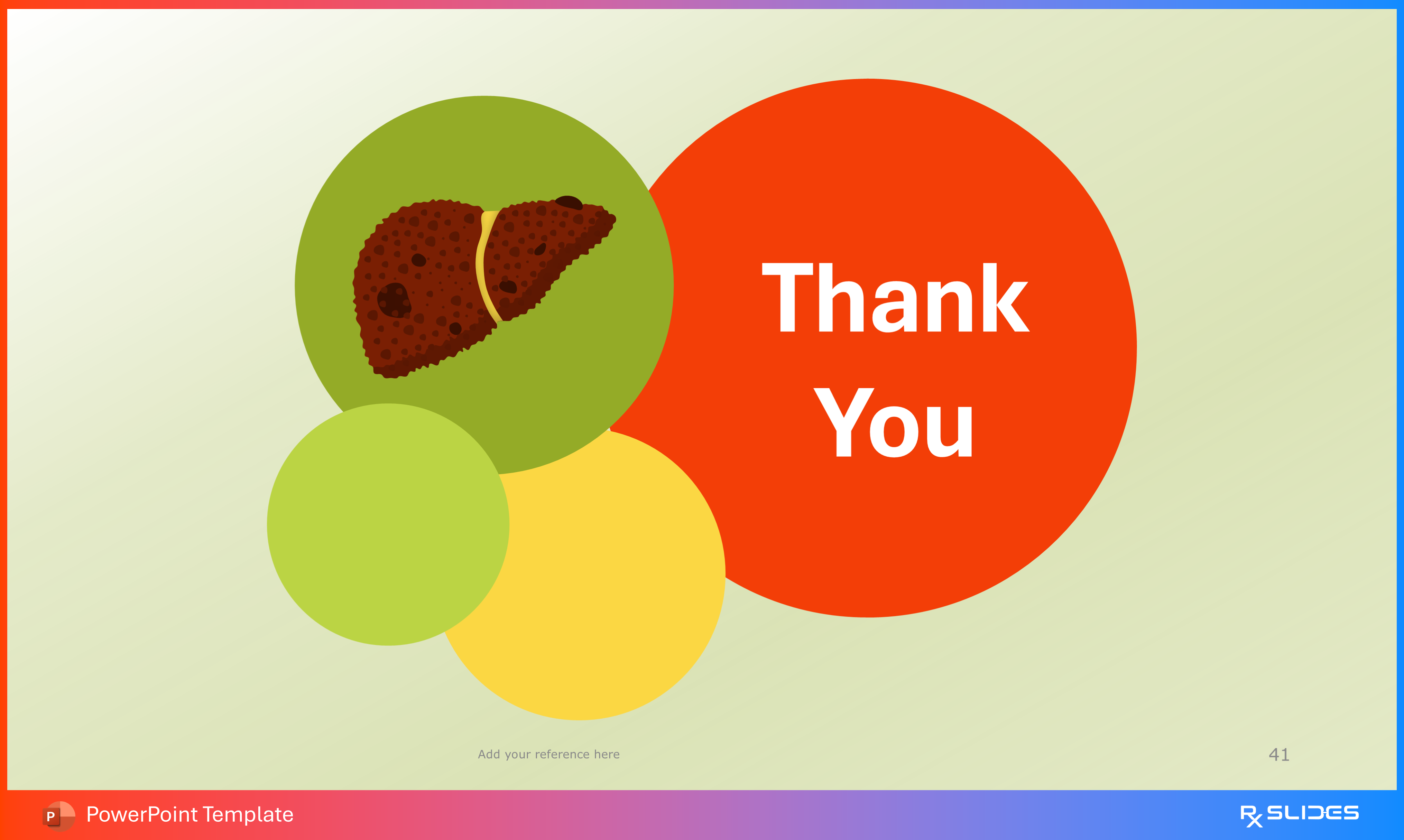
- Final closing slide with clean typography and minimal design, maintaining brand consistency and professional closure.
Features of the Template
- 100% editable PowerPoint template.
- Editable colors, you can change according to your presentation style and company branding guidelines.

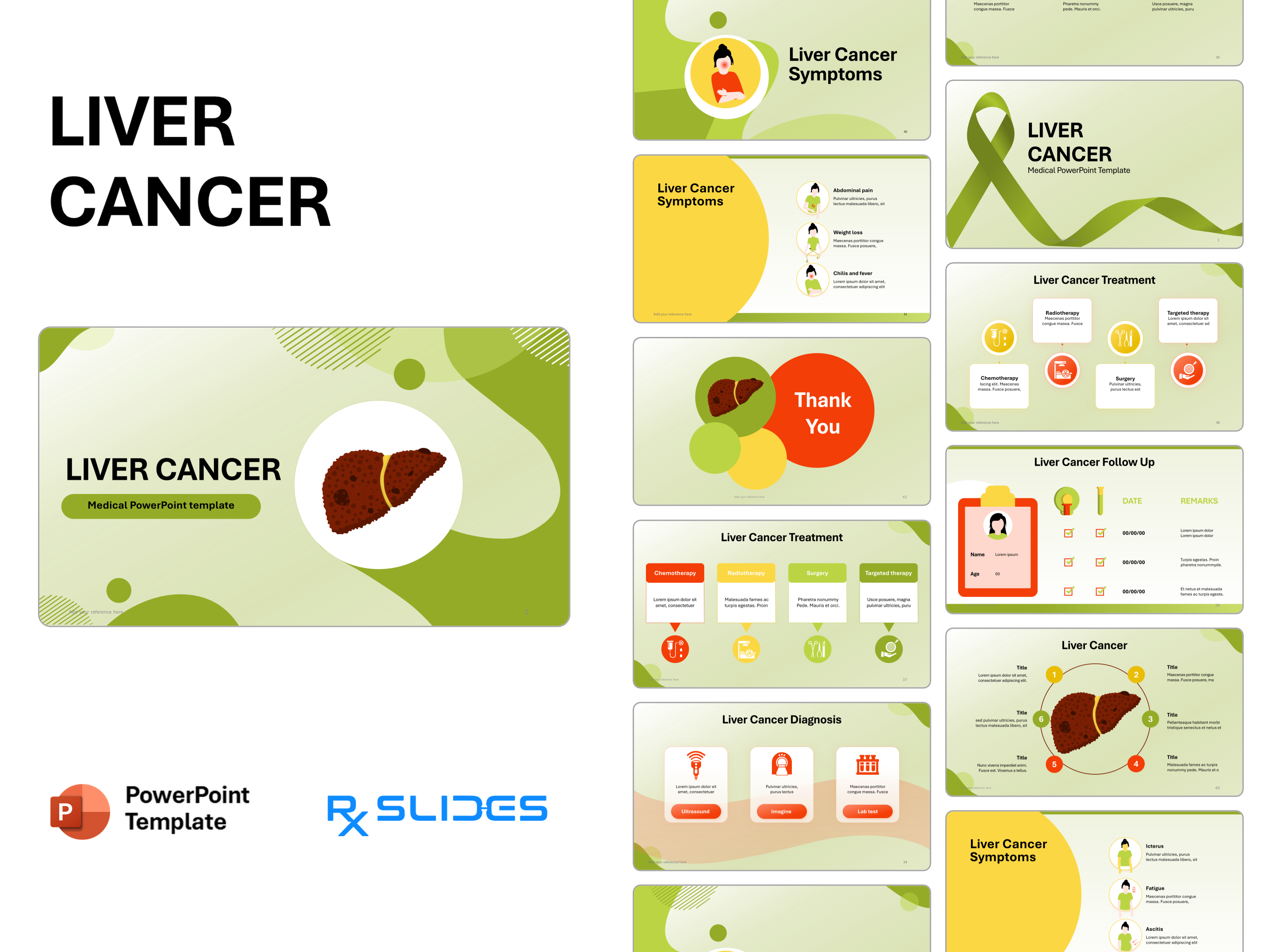
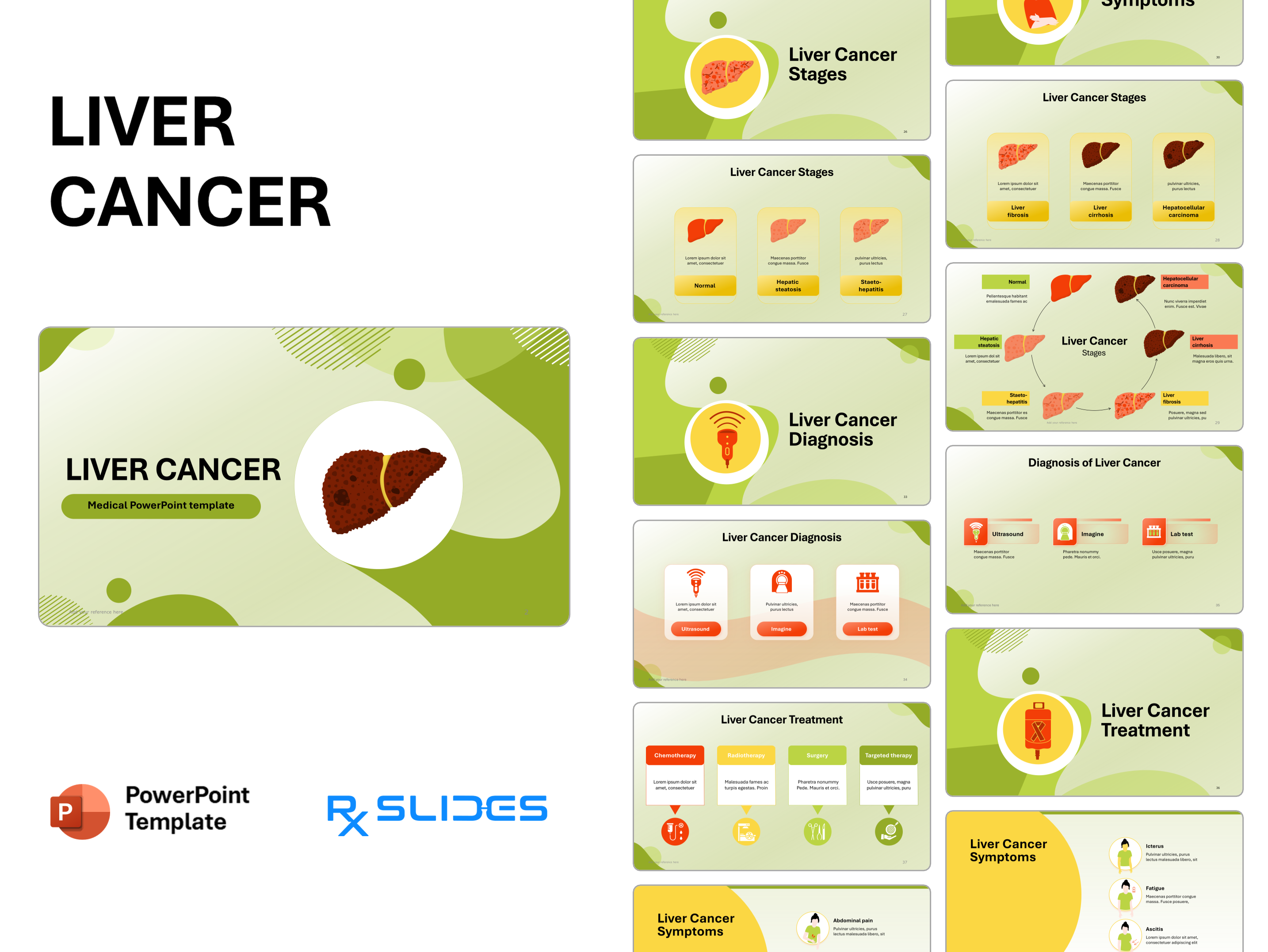
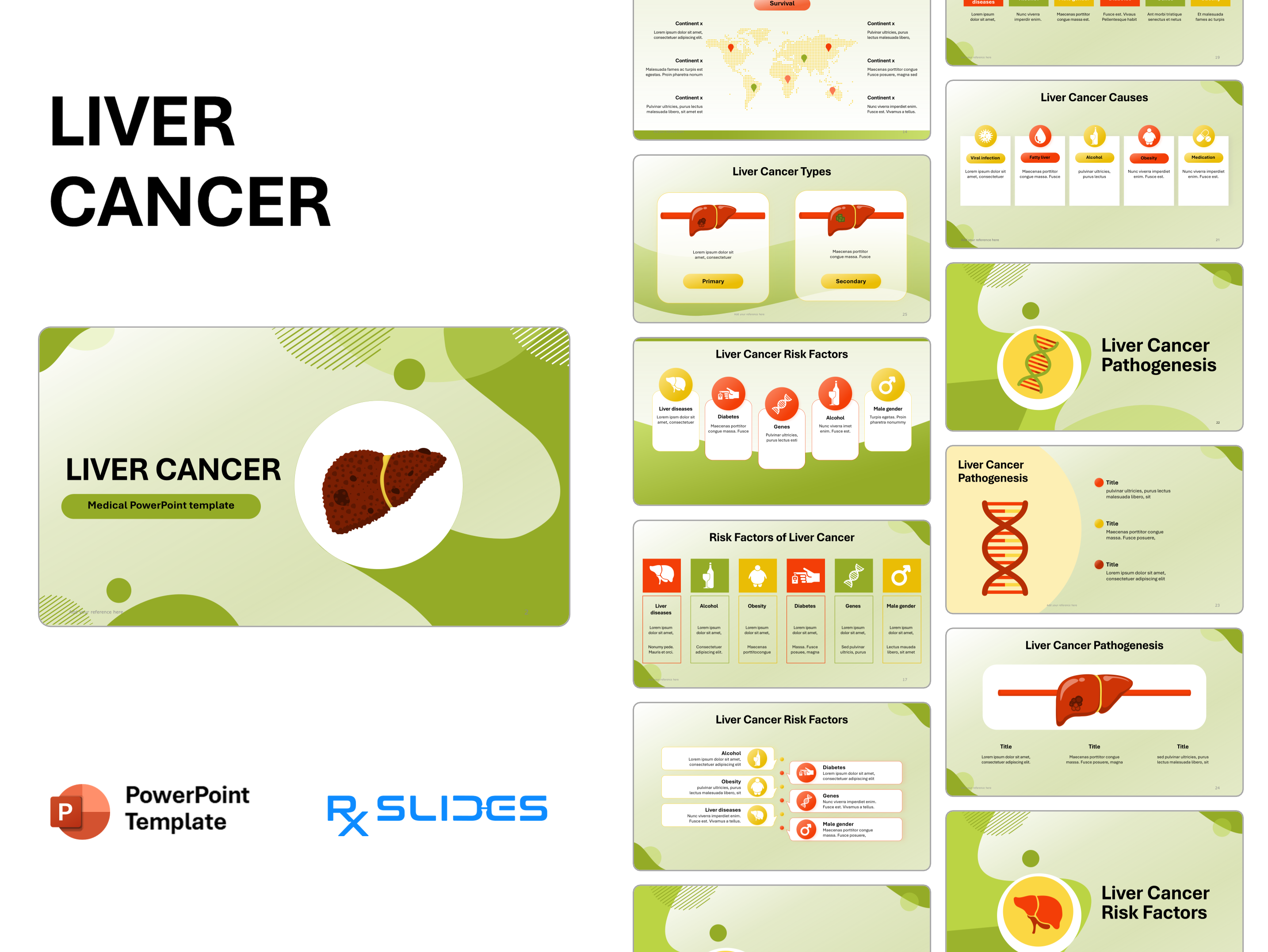
.avif)
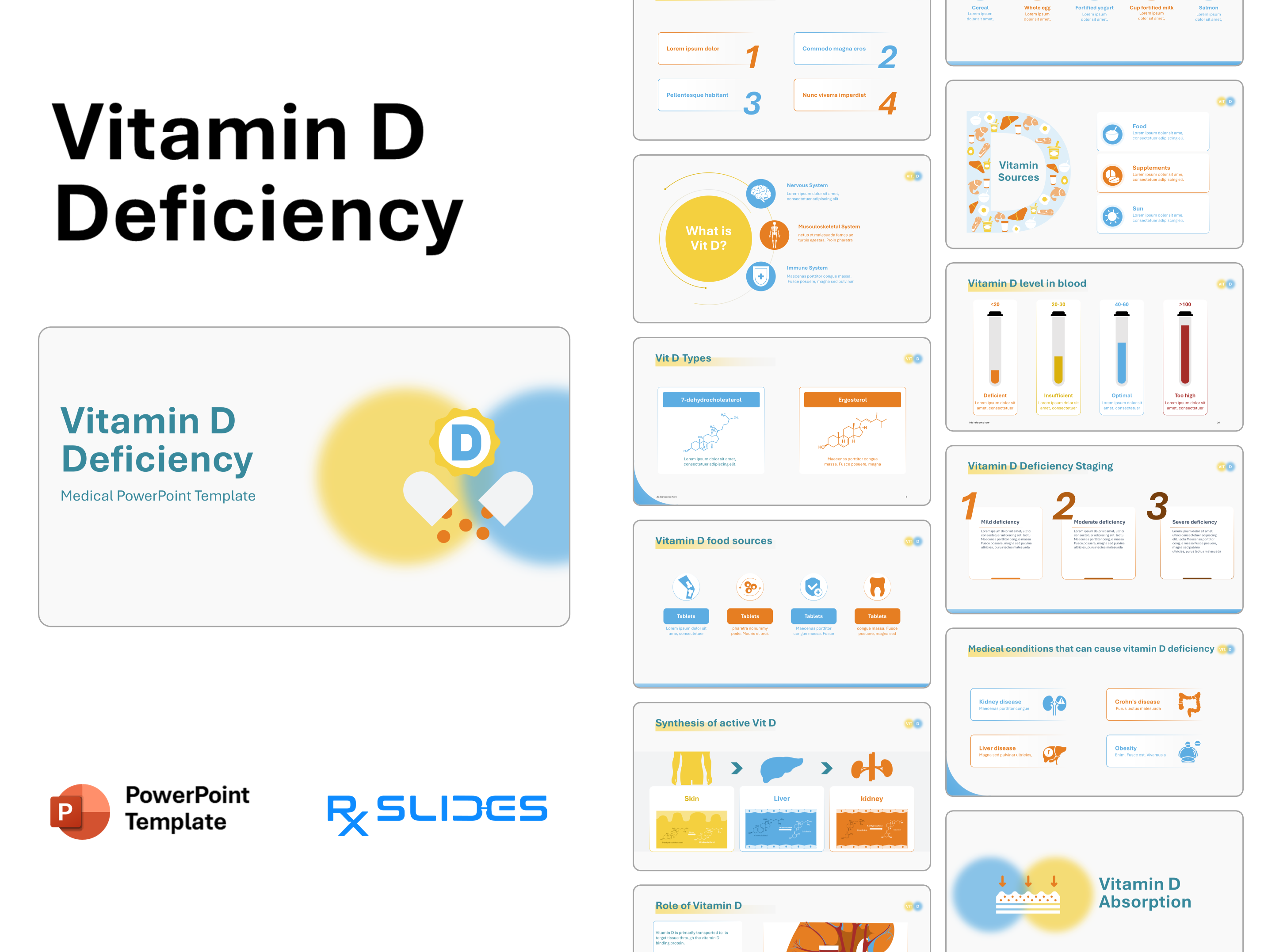
.avif)


